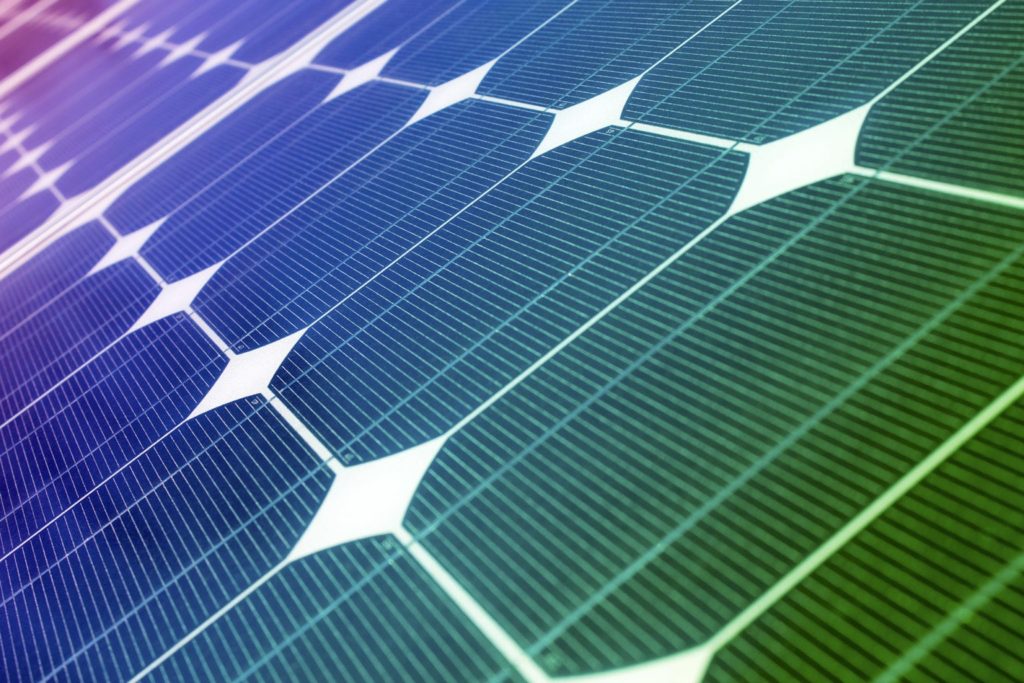Demand for solar energy is increasing around the world as recognition of the need for clean energy alternatives grows. Solar is also attractive for power generation in areas where water is scarce. Continued provision of government incentives and tax rebates for the install of solar panels is driving further interest. Solar panels are finding their way onto commercial and residential rooftops and in parabolic troughs and solar power towers for electricity generation. Allied Market Research predicts the value of the global solar energy industry will expand dramatically at a compound annual growth rate of 24.2% from $86 billion in 2015 to $422 billion by 2022.
One barrier to the installation of solar panels is their appearance. Generic photovoltaic (PV) panels are dark, which limits the acceptable locations where PV panels can be installed, according to Clark Boyd, chief technology officer of Virginia-based technology firm The Face® Companies. “Various techniques have been developed to address this problem, all of which have drawbacks including: significant reductions in energy conversion efficiency, limitations in the degree to which the PV panels are actually concealed, limitations in the color and appearance of the final installation, and the requirement to use only specific types of PV panels,” he explains.
Evergreen® Technologies, LLC, a business unit of Face, has developed a coating that overcomes this important limitation. Evergreen Spectral™ optical coating (referred to as Spectral) gives an opaque colored appearance but is a substantially light transmissive coating that can be applied similar to paint and can be made in essentially any color or design. Most importantly, it can be applied over any PV panel with only a small decrease in overall efficiency—it allows 80% or more of incoming light to pass through it, according to Boyd. “This optical coating technology will address the market for ‘hidden’ PV panels in a variety of installations including roofing materials, electric vehicles, and various portable electronic devices,” he asserts.
A solar-powered roof shingle can . . . look just like a conventional shingle, while a solar panel on the roof of an electric car can be visually indistinguishable from the rest of the vehicle’s surface.
Indeed, The Face Companies’ CEO Brad Face believes that application of the Spectral coating can enable light-sensitive devices such as solar panels and photosensors to be disguised or seamlessly concealed, significantly increasing the aesthetic and economic appeal of these devices for a wide range of applications. “With the Spectral coating, both natural and artificial light harvesting can be used in virtually every building to power a wide range of electronic devices and security sensors, including those enabled by the Internet of Things,” he asserts. A solar-powered roof shingle can, for instance, look just like a conventional shingle, while a solar panel on the roof of an electric car can be visually indistinguishable from the rest of the vehicle’s surface. The coating can also be applied to the back of a smartphone case to conceal a solar charging panel. In addition, the coating can be used to conceal wireless Internet-of-Things (IoT) nodes and sensing devices for military and security applications. For instance, motion detectors or photodetectors can be made to blend in with their surroundings, looking like rocks, fence posts, or other common objects.
The key challenge was developing a colored coating that still enables the bulk of solar light to pass through it. Evergreen’s solution was to incorporate microspheres (glass or ceramic)—particles that reflect sufficient light to not appear transparent at any angle— into the coating formulation. “Light hitting the coating is designed to reflect in each little piece of it as a given color. Anything that isn’t reflected goes right through. As a result, the human eye sees an opaque surface even though the coating is substantially transmissive,” Boyd explains. The particles have an overall particle diameter of less than 5 microns yet consist of up to 30 or more layers of materials with various dielectric properties that allow the selective scattering of specific wavelengths of electromagnetic energy. Initially they have been generated using an atomic layer deposition (ALD) process. The color of the coating can be changed by applying an electric field to create a dielectric response. To demonstrate the effectiveness of the Spectral coating, it was tested on a military motion-and-vibration sensor developed for the government. The sensor was covered in a clear material shaped like a rock. Application of the Spectral coating allowed the sensor to be camouflaged as a rock yet continue to power itself using photovoltaic power.
The binder for the microspheres in the Spectral coating can be solvent- or water-based depending on the end use. Its durability, according to Boyd, is similar to that of other high-performance paints, such as those used in the automotive industry. Unlike these other coatings, however, the Spectral paint does not fade over time due to the creation of color through a reflection mechanism. “Our coating does not contain any pigments that absorb and re-emit light,” Boyd observes.
The current challenge for the company is to develop improved formulas and processes that can be readily scaled to enable commercial manufacture of the Spectral coating. “We are working in collaboration with researchers at Old Dominion University to develop large-scale wet chemistry processes for the production of the microspheres in large quantities,” notes Boyd. He adds that samples will be available beginning in late Q2 of 2019, with production expected to begin sometime in 2020. The company will use a variety of methods to get Spectral into the marketplace, including licensing agreements and joint-ventures with existing coating manufacturers. The coating, according to Boyd, will be competitively priced compared with high-performance coatings such as those used in the automobile industry, and it will be applied using conventional painting processes.
CoatingsTech | Vol. 16, No. 2 | February 2019
